Rose El toro
Flowers of bright colors in most people usually evoke no less vivid emotions. And if we are talking about roses, then many will certainly want to settle such a plant in their garden. A variety of the queen of flowers with the sonorous name of El Toro falls under the specified description. She has a catchy, memorable appearance and increased resistance to all sorts of negative environmental factors.
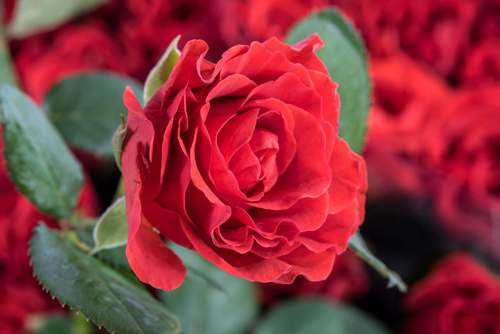
History of origin
This variety appeared in 2003 in the Netherlands. To create it, the Dutch breeder Hubert Wijnand Olij made some efforts. The culture received a Spanish name, which means "bull, calf" in translation. And this is not without reason, because the color of its buds is red, and the red canvas is an obligatory attribute of bullfighting - the fight of a bullfighter with a bull, which in Spain has the status of a mass national spectacle. The scarlet tone of the flower petals of this plant also evokes thoughts of flamenco dance, in which the bright skirts of Spanish women develop in time with their movements. In addition, there is every reason to believe that the variety was named after the Spanish town of the same name. Other names for the rose: Eltora, Zheltors.
Description of the variety
El Toro belongs to the hybrid tea group. It is a tall, densely leafy shrub, reaching a height of 0.8 meters. It is formed by erect shoots, practically devoid of thorny thorns. The leaves of the plant are carved, small in size and dark green in color, sometimes with a reddish tint. The peduncles of this variety are very strong. They are crowned with large buds up to 10 cm in diameter. Dissolving, the flowers become even larger - up to 12 cm in girth. Their hue can be described as red-orange or blood-red. El toro flowers are single, exuding a subtle but pleasant aroma. Each of them consists of 35-40 corrugated petals.
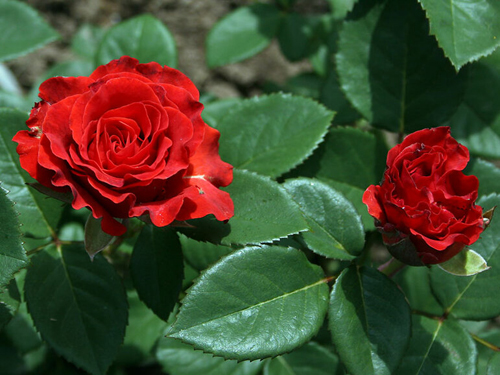
During the flowering season, which is continuous and luxuriant, the color of the rose buds can change incessantly. But since the Dutch beauty does not belong to the class of chameleon varieties, this concerns mostly the intensity of the shade: at different times, the tones of the flower petals become more saturated, then, on the contrary, they turn very pale. The play of colors sometimes creates spectacular color transitions, from which you simply cannot take your eyes off. Under the influence of the bright sun, El Toro buds are subject to fading, which leads to the appearance of a kind of dark dusting on the petals. However, this does not spoil the appearance of the noble plant at all, especially since the flowers keep on the stems for quite a long time and do not lose their original shape.
El toro is very resistant to powdery mildew and black spot. Delicate petals of luxurious buds are absolutely not afraid of even the most heavy rain. The maximum drop in air temperature that the rose can withstand is -23 ° C.
Agrotechnical features
The plant prefers lighted places, reliably protected from cold gusty winds. However, given the serious vulnerability of delicate buds under the influence of sunlight, the bush should be planted on the site so that in the summer at midday it is in openwork partial shade.
It is better to use the soil for the plant moistened, well-drained, with a slightly acidic reaction and a sufficient level of fertility. El Toro grows well on loam. Expanded clay, sand or gravel can serve as a drainage material. The soil mixture is made up of the following components: leaf or garden soil, humus, peat. They are taken in a ratio of 2: 3: 1. The most suitable period for planting a rose is May-month. Before carrying out this measure, the root system of the seedling must be placed in water for 5 hours. After that, weak roots and those that have damage are removed. The planting hole is dug to a depth of at least 50 cm. A drainage layer is laid at the bottom. The seedling is placed in the hole so that its roots are freely located in the hole. They are covered with prepared soil. After that, be sure to water the plant.
The basics of caring for ornamental flowering shrubs: regular moistening, loosening the soil, weeding, feeding, pruning.
- Watering. This procedure must be performed 2 times a week in dry, hot weather and 1 time if the summer is rainy and cool. Water for moistening the soil under El Toro is used fresh, settled, without bleach in the composition, slightly warm.
- Loosening. It is performed the next day after watering. The soil under the rose is loosened several times a month. This must be done carefully so as not to damage the roots of El toro. Along the way, weeds are removed around the flower. After loosening, the substrate is mulched in order to retain moisture in the soil.
- Top dressing. The best time for them is spring and mid-summer. In the first case, organic matter is used as fertilizers, in the second, a specialized mineral complex is used.
- Pruning. It should affect the weak, dead and diseased shoots of El Toro. Pruning is carried out in the spring until the buds awaken. In the summer, the wild growth that the culture gives is removed.
In autumn, watering the plants is stopped, the shoots are shortened. Despite its good winter hardiness, the variety needs shelter for the winter, especially when grown in the northern regions. The bush is sprinkled with earth, sprinkled with sawdust, covered with spruce branches.
Use cases
El Toro is a variety ideal for landscaping a garden, park, square, front garden. It will become a luxurious diamond of your flower garden and, moreover, a rose garden, where it will shine against the background of other roses. In landscape design, ornamental shrubs are widely used in the formation of hedges. It can often be seen in mixborders, solitary and mixed plantings. Perennial neighbors in group compositions should make roses that give buds of contrasting shades. The lush scarlet buds of El toro are also good for cutting, as they retain their fresh and attractive appearance for a long time.

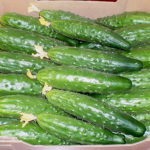
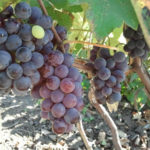
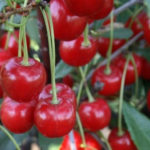
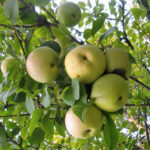




This variety is still new to me - it has been growing in the garden for the sixth year. I am completely delighted with blossoming roses - there are few varieties in which the petals are painted in such a bright and rich color! I do not agree with the author of the article - the petals of these roses absolutely do not fade in the sun, which makes them one of the best! When planting, she deepened the grafting site by 7 cm, now, even if the ground part of the bush dies during a frosty winter or thaw, the bush quickly and easily recovers from the underground part. The variety has good health - it suffers little from fungal infections and black spot, but I do not forget about preventive treatments.